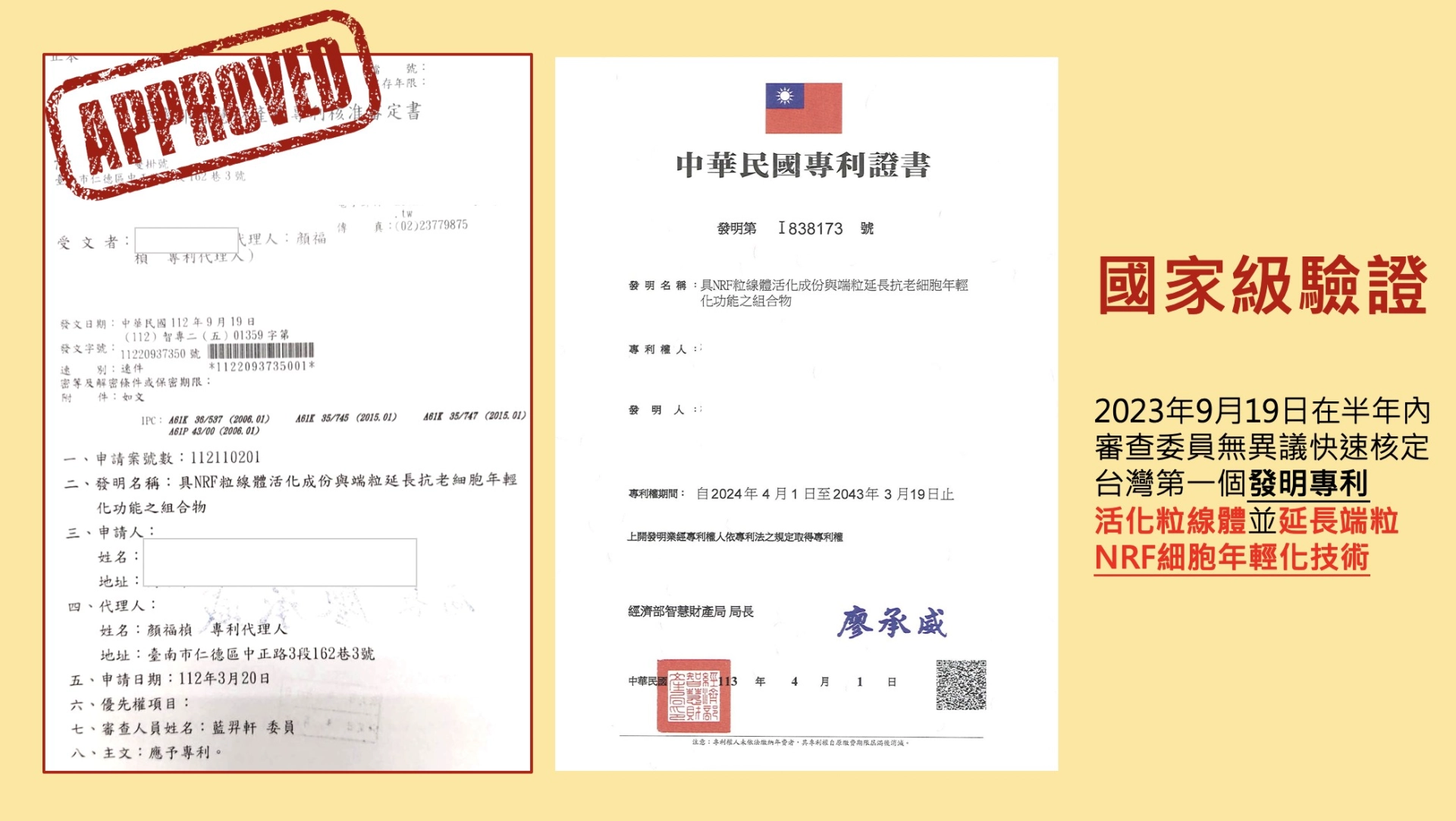
細胞年輕的關鍵
活化粒線體 / 保護並延長端粒
NRF年輕因子是轉錄因子,在細胞抗氧化和能量代謝中發揮重要作用,與細胞年輕化密切相關。最新研究顯示,NRF能透過幾個機制促進細胞年輕化:
1.延長端粒:端粒是一種加在端粒末端的重複序列。NRF能夠延長或穩定端粒,進而促進細胞新生組織更新。
2.活化粒線體:NRF可活化粒線體活性,參與調節細胞的能量生成,確保細胞有足夠的能量進行DNA修復和端粒維護。促進正常代謝和能量平衡,間接幫助延長端粒長度。
3.抗氧化:NRF通過促進抗氧化酶的表達,幫助細胞清除活性氧種,這些活性氧種可以損傷DNA,包括端粒。通過減少氧化應激,NRF有助於保護端粒,延緩其縮短的過程。
上述機制,NRF不僅在抗老化研究中展現出潛力,也為疾病治療提供了新的視角。
Activating Mitochondria / Extending Telomere Protection
The NRF youth factor is a transcription factor that plays a vital role in cellular antioxidant processes and energy metabolism, closely associated with cellular rejuvenation. Recent research indicates that NRF can promote cellular youth through several mechanisms:
Enhancing telomerase activity: Telomerase is an enzyme that adds repetitive DNA sequences to the ends of telomeres, thereby preventing their shortening. NRF can enhance the expression and activity of telomerase, thereby promoting the extension of telomeres.
Activating mitochondria: NRF can activate mitochondrial activity, involved in regulating cellular energy production, ensuring cells have enough energy for DNA repair and telomere maintenance. It promotes normal metabolism and energy balance, indirectly helping to extend telomere length.
Antioxidation: NRF aids cells in eliminating reactive oxygen species by boosting the expression of antioxidative enzymes. These reactive oxygen species can damage DNA, including telomeres. By reducing oxidative stress, NRF helps protect telomeres and slows their shortening process.
Through the above mechanisms, NRF not only demonstrates potential in anti-aging research but also provides a new perspective for disease treatment.









